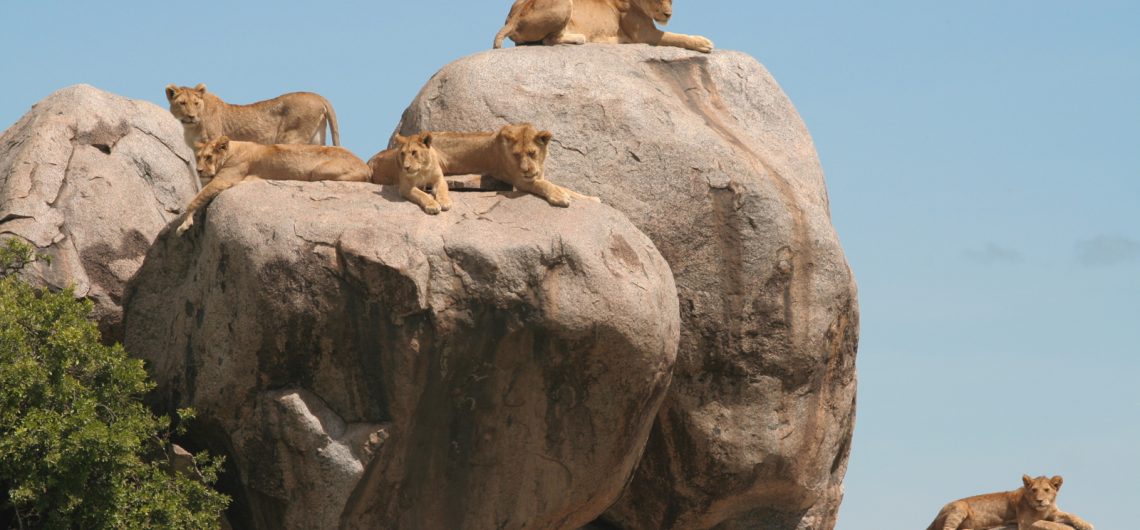The Kopjes of the Serengeti stand out on the vast and endless plain of this magnificent park in Northern Tanzania. They are massive rocks that rise from the savannah terrain creating a dramatic scenery among the acacia trees and the grassland vegetation that span across the plains, into the horizon, and as far as your eyes can see. You have probably been fascinated by these kopjes while on safari game drives in Tanzania. Welcome to our guide on the Kopjes of Serengeti! Here, we’ll take you on a journey to explore the fascinating geological formations that dot the Serengeti landscape. Our goal is to provide you with a comprehensive understanding of the kopjes, their formation, and their significance to the Serengeti ecosystem.
What are the Kopjes?
The kopjes are rocky outcroppings that rise up from the Serengeti plains. These formations are made up of granite, which was formed from the cooling of magma deep beneath the Earth’s surface. Over time, erosion has weathered away the softer rock, leaving behind the more resistant granite.
The kopjes vary in size, from small, isolated formations to large clusters that cover several acres. They can be found throughout the Serengeti, but are most abundant in the central and northern regions of the park.
How were they formed?
The kopjes are the result of millions of years of geological activity. The granite that makes up the Kopjes was formed around 500 million years ago, during a period of intense volcanic activity in the region. As the magma cooled and solidified, it formed a large granite pluton beneath the Earth’s surface.
Over time, the overlying rock was eroded away, exposing the granite pluton. As the exposed granite was further weathered by wind and rain, it was gradually broken down into smaller and smaller pieces. The resulting debris was then transported away by streams and rivers, leaving behind the larger, more resistant rocks that we see today as the kopjes.
Why are they important?
The kopjes are an integral part of the Serengeti ecosystem. They provide a unique habitat for a wide variety of plant and animal species, many of which are found nowhere else in the park.
The rocky crevices and outcroppings of the kopjes provide shelter and protection for a number of species, including hyraxes, snakes, and birds. The hyraxes, in particular, are an important food source for predators such as leopards and lions.
In addition to their ecological significance, the kopjes also have cultural and historical importance. The Maasai people, who have lived in the region for centuries, consider the kopjes to be sacred and use them in their traditional ceremonies and rituals.
Conclusion
In conclusion, the kopjes of Serengeti are a unique and important feature of the park’s landscape. Their geological origins, ecological significance, and cultural importance make them a fascinating subject for study and exploration. We hope that this guide has provided you with a better understanding of the kopjes and their role in the Serengeti ecosystem.
![]()



Comments